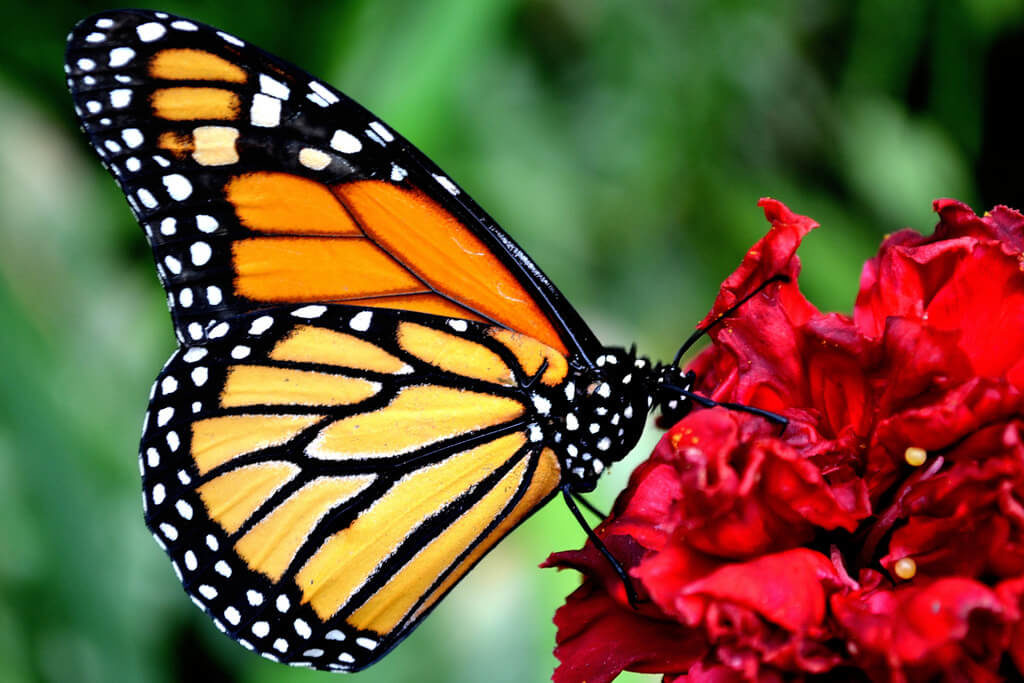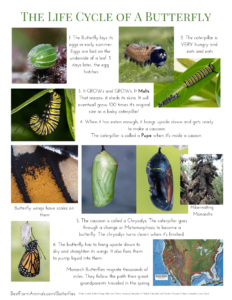Throughout summer and as fall nears, butterfly eggs can be found on the underside of leaves. It left me wondering about the life cycle of the butterfly. I had questions about how long they live and how they survive the cold. So I did some research.
What Is The Life Cycle Of A Butterfly? Butterflies have 4 life stages. Some butterflies also have 4 generational cycles each year. The lifecycle of a butterfly includes the egg stage, larva or caterpillar state, pupa or chrysalis state, and the adult butterfly state. Butterflies have several generations and their lifespan will vary based on the generation of the butterfly and the species.
Butterflies are amazing insects. They metamorphosis into several different stages. Each stage of a butterfly’s life has a specific purpose.
Stage One: Butterfly Eggs
Butterflies start their life when the eggs are laid. Butterflies generally lay eggs on specific plants. These plants provide the right type of food for the future caterpillars.
Butterfly eggs are very small. They are either round, cylindrical, or oval. They can also have ribbing around them. They can be as small as bits of dust and are easily missed by most people. The shape, color, and type of butterfly will determine what the eggs look like.
Butterflies lay eggs really close together. A female adult butterfly will lay many eggs at once so that at least some of them will survive. They also lay their eggs on the underside of the leaf. This helps to protect the eggs from predators.
Many butterfly eggs rest for about 5 days before they hatch. Monarch eggs will hatch in northern climates as early as March or April. Other species will not hatch until the weather gets warmer.

Stage Two: Caterpillar Larvae
When the egg hatches, tiny caterpillar larvae emerge. They are very little but have very large appetites. The larvae will immediately start eating and eating. Caterpillars will grow as much as 100 times their original size! They eat many times their own weight in food.
Did you know?
Monarch butterfly eggs are the size of a pinhead and its larvae are small enough to fit inside the egg. But within two weeks, a monarch caterpillar will be 2 inches long and very fat!
Consider if a newborn baby weighing 7 pounds ate 1400 pounds in the first two weeks of life! That’s what a caterpillar will consume relative to its size.
Caterpillars will grow so much that they will have to shed their skin many times. Many caterpillars shed their skin as many as five or six times in a lifetime. The skin of a caterpillar is called exoskeleton. When they shed their skin it is called molting. The skin splits and the caterpillar emerges with a new, larger skin.
Much of the food that a caterpillar eats is saved for the time that it becomes a chrysalis or hibernates. Some of the food is even stored for the adult butterfly to use.
Caterpillars look a little like worms to the untrained eye. However, caterpillars usually have beautiful patterns of stripes or patches on them. Monarch caterpillars have a pattern of black, white and yellow stripes that warn predators that they are poisonous to eat.
Caterpillars stay caterpillars for a few weeks only.
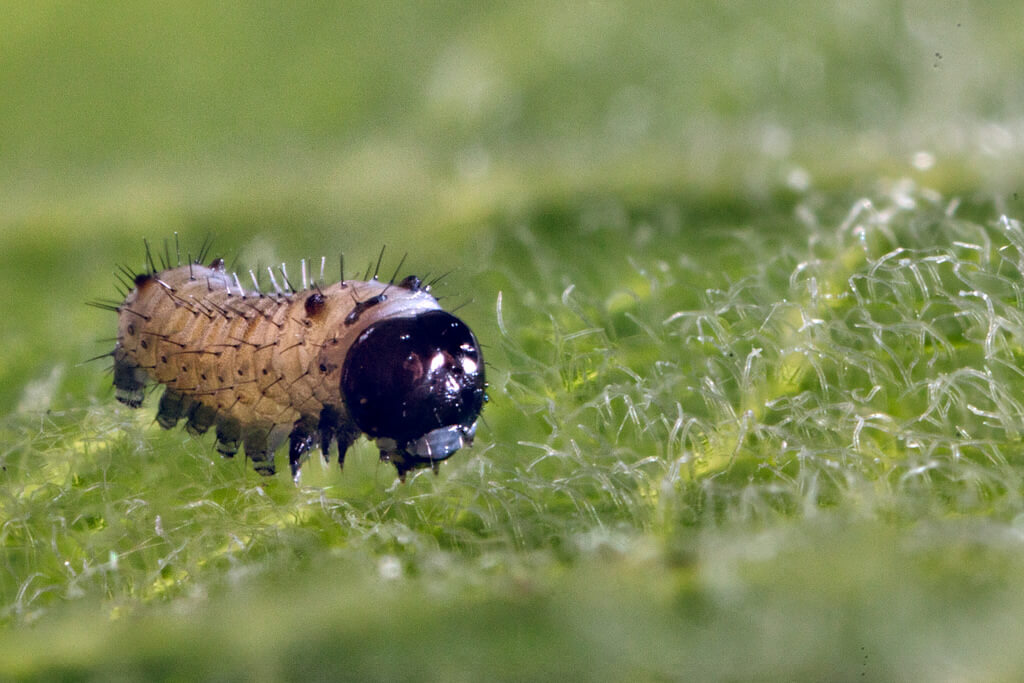
Stage 3: Pupa or Chrysalis
When a caterpillar has eaten enough food to grow to its ideal length and fatness, it will hang upside down. Caterpillars won’t change into a chrysalis on the ground. A caterpillar that is hanging and shaped like a J is probably about the form into a chrysalis.
Chrysalis is also called the pupa. It is mostly colored green or brown. It is colored to camouflage with the colors around it. It makes the pupa more invisible to animals and helps to keep it safe. It protects it from predators.
The pupa can stay in its stage for a few weeks to a few months. Some species of butterflies stay in the pupa stage for as long as a couple of years! How long the chrysalis stage lasts can also depend on the time of the year and whether or not the butterfly has to hibernate over the wintertime.
The outside of the chrysalis hardens. This helps to protect the transforming caterpillar. During the pupa stage, it appears that nothing is happening. The caterpillar seems to be resting.
However, inside the pupa, major changes are occurring. These changes are called metamorphosis.
The caterpillar carried special cells inside it that start to grow. These cells will become the adult butterfly. They grow into legs, wings, eyes, and antenna. The old cells of the caterpillar become food for these new cells. Even the organs of the caterpillar change into new insides for the butterfly.
As a result, the emerging butterfly will not have remnants of the old caterpillar left.
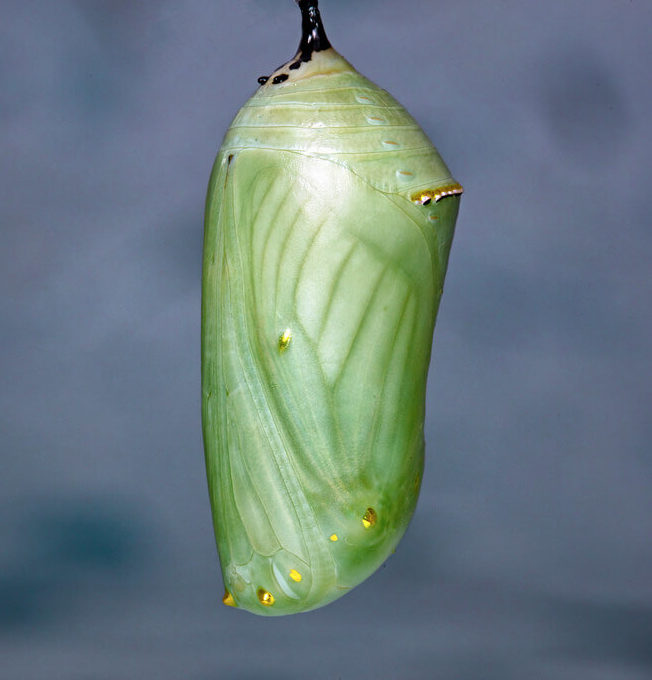
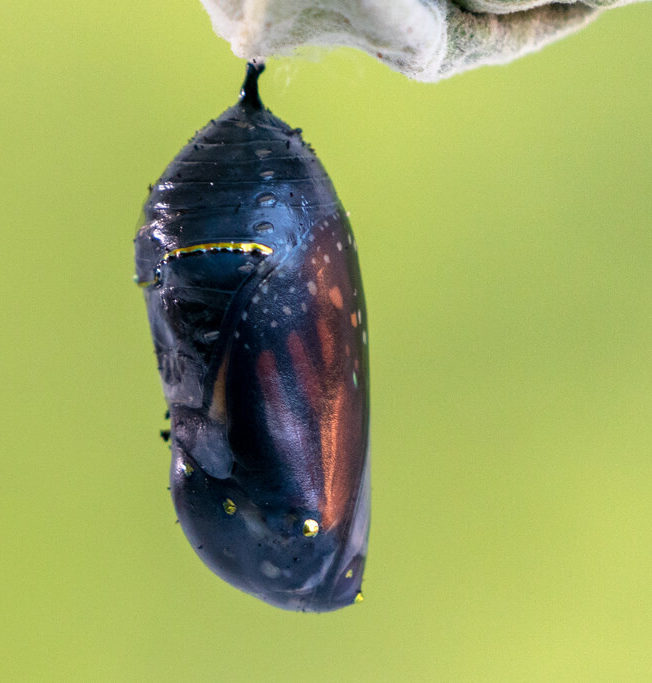
Stage 4: Butterfly
When the transformation of the butterfly is complete, the pupa starts to change in color. It can either darken or become translucent. The butterfly emerges from the chrysalis fully formed. An emerging butterfly only takes a few seconds to fully emerge. Very little of the pupa is left after the butterfly emerges.
The first thing the butterfly does is to hang upside down. They will flap their wings. This allows gravity to pull the wings down so that they can dry straight. It also allows the butterfly to pump a chemical called hemolymph into the wings. Hemolymph helps the wings to expand and to be strong.
It is necessary that a butterfly’s wings dry straight or they won’t be able to fly well. This will result in starvation or being eaten by predators.
After about 3 hours of flapping, the wings will be dried. At that point, the butterfly will start flying around to search for a mate. It may take the butterfly a few minutes to learn to fly well. Adult butterflies don’t eat the same food that the caterpillar ate. They usually eat nectar from flowers and water. Many species of butterflies don’t eat at all. Their only purpose is to mate.
Once a butterfly has mated, the females will lay eggs on the bottom side of a leaf. Then the life cycle will start over again.
Most butterflies live only a couple of weeks.
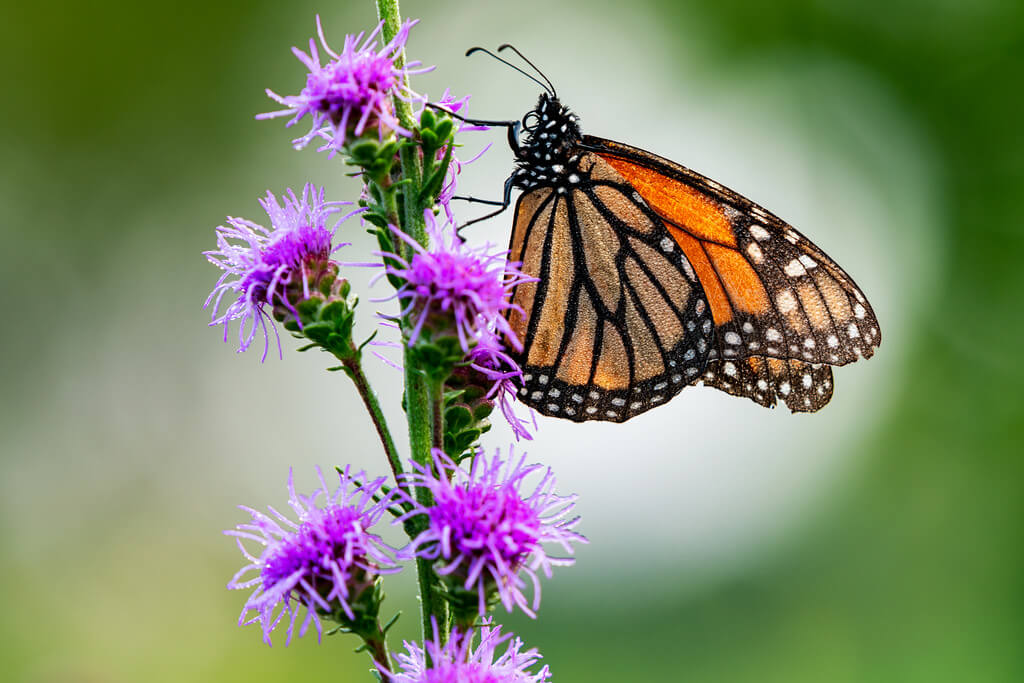
The Generation Cycle Of Monarch Butterflies
Monarch butterflies have 4-5 generations each year. Amazingly enough, the monarch butterflies that migrate from the United States to Mexico will do so never having made the trip before.
In the early spring, monarch butterflies come out of hibernation and make their way north from Mexico. They travel thousands of miles in a short time. These first-generation monarchs will lay eggs in the north and early spring.
Four days later, the eggs hatch. Then, after two weeks of eating, the caterpillars change into the chrysalis. After 10 days in the chrysalis, the new butterfly will emerge. The adult monarch will then mate and lay eggs. Adult monarch butterflies live between 2 and 6 weeks.
Second generation butterflies are born in May and June. Third generation butterflies are born in July and August. The fourth generation of monarchs are born in September and October.
But the fourth generation is a lot different from the other generations. The weather is already turning colder, which slows the metabolism of the butterflies.
Fourth generation butterflies migrate south for the winter. These butterflies will choose the same trees and location as their ancestors even though they have never been south before. They will hibernate for the winter. The fourth generation of monarchs will live six to eight months!
Once winter is over, monarchs make their way back north to start the process over again!
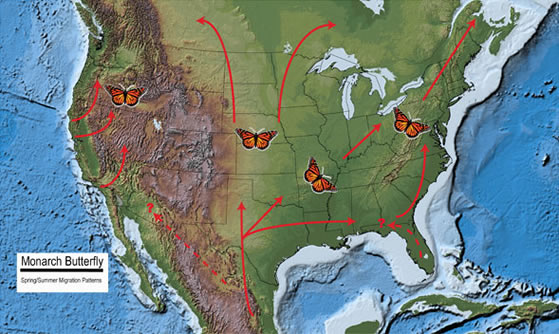
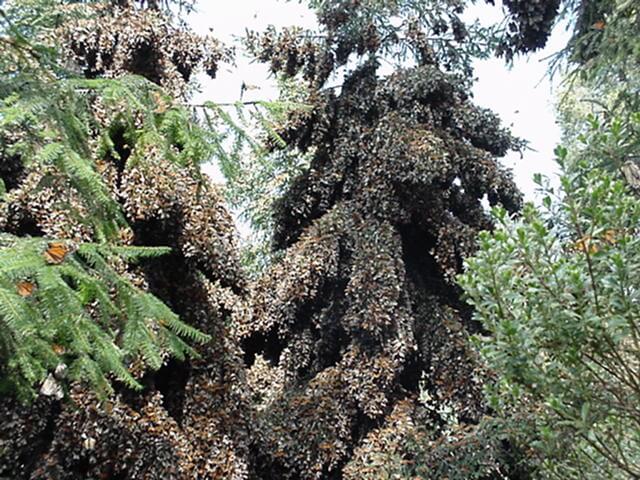
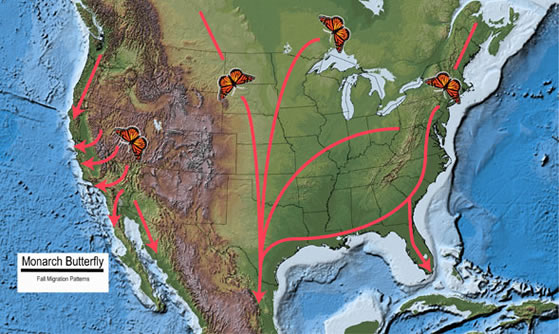
How Long Do Butterflies Live?
Each species of butterflies has a different life span. Most adult butterflies only live one to two weeks before dying. There are a few exceptions. One caterpillar, the yucca moth, can take up to 30 years to make a pupa!
- Heliconians – 9 months
- Monarchs – 4 weeks to 9 months
- Mourning Cloaks – 9 months
- Painted Ladies – 12 months
For more information check out https://www.fs.fed.us/wildflowers/pollinators/Monarch_Butterfly/migration/index.shtml
Download The Lifecycle of a Butterfly PDF printable by BestFarmAnimals.com
Click on the link above for the printable page!
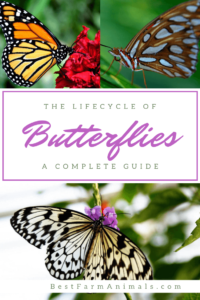


[post-carousel id=”562″]

